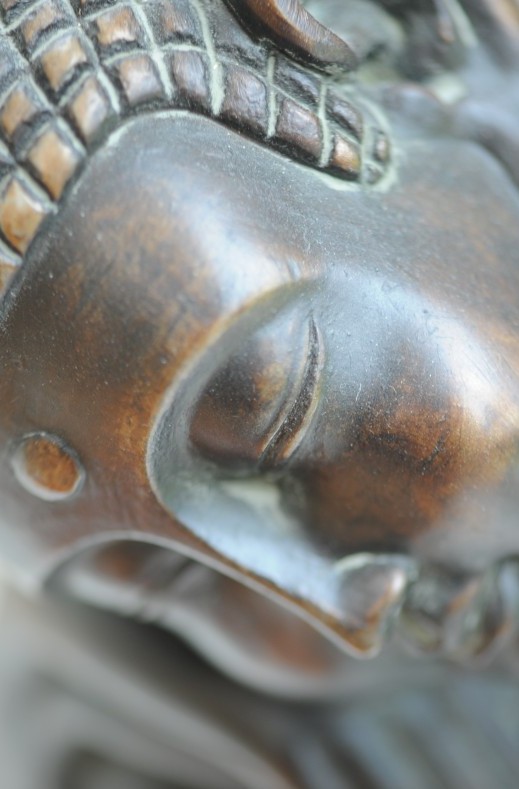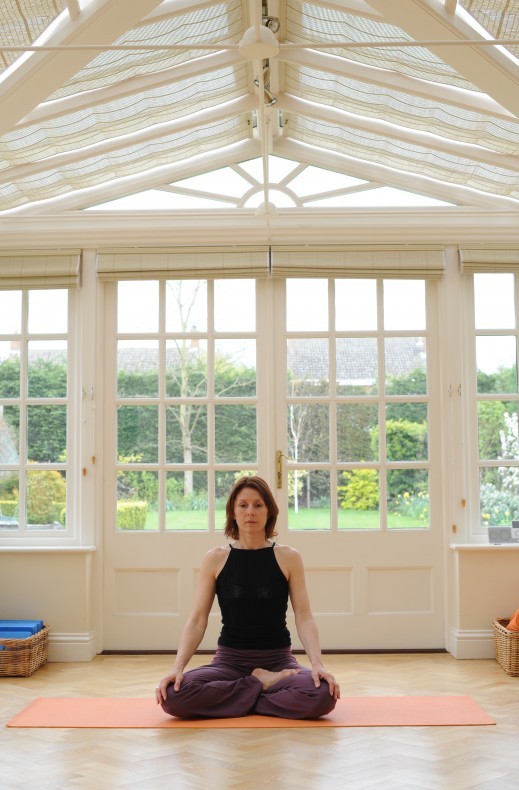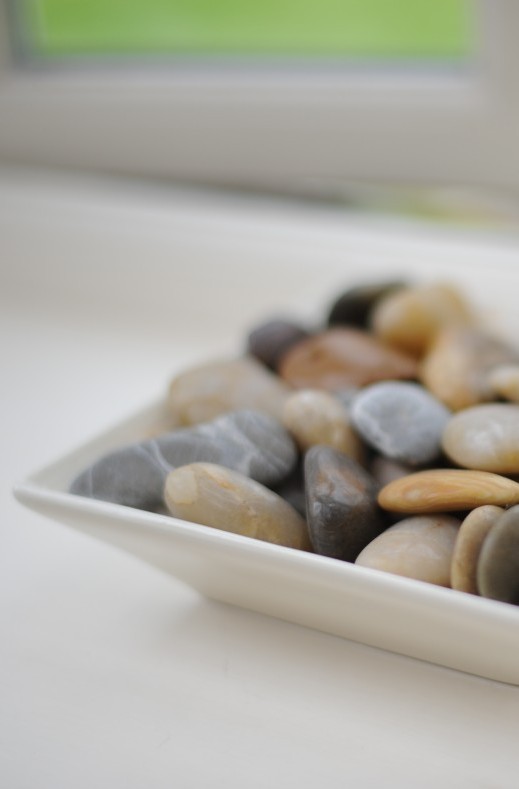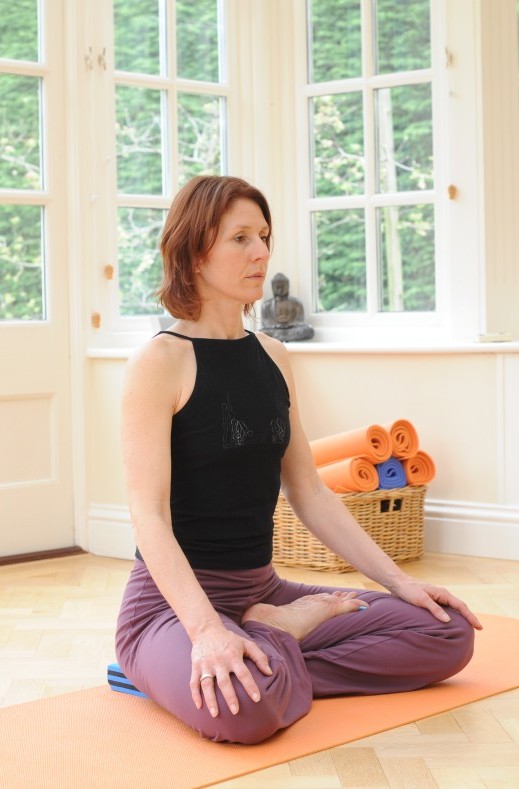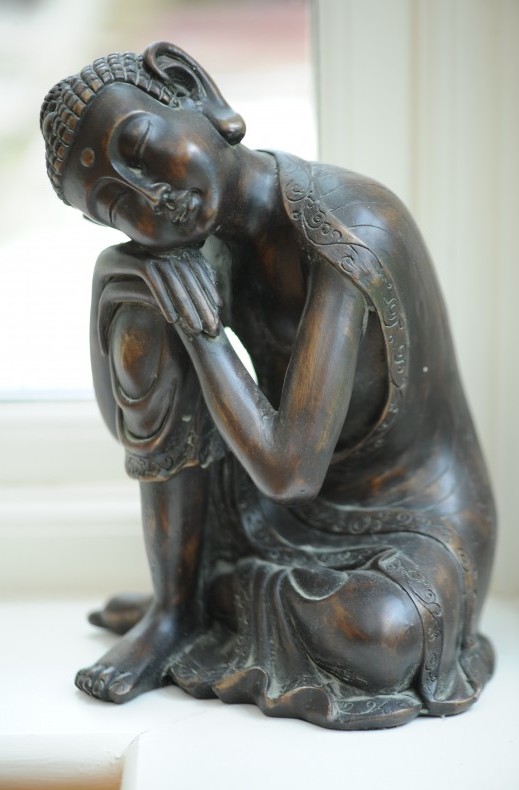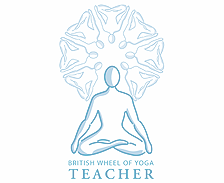
meditation
halcyon
yoga
practice
I teach basic sitting meditation, called ‘Shamata’ (see tradition section below for more details) or ‘mind calming’, in the Halcyon Yoga studio, based in Bedford.
Shamata is a state of being aware of our present reality without judgement of ourselves or our experience. In this respect it is similar to the way very young children experience life; free from the attachment of importance to desired outcomes and expectations.
Meditation practice allows us the opportunity to connect with and ultimately to accept the present moment exactly as it is. During the practice we do not need to change anything, improve upon anything, analyse or be afraid. This can feel deeply relaxing and peaceful.
We begin by sitting quietly and noticing what we can sense, we usually start with our breathing. We need to ‘train’ our minds to rest in awareness, as initially we are constantly distracted by becoming caught up in the story line of our mind chatter. There are many different mind training practices to try and choose from. These are best approached in progressive stages and taught by a qualified meditation teacher.
Ultimately, when our reactions have calmed down and we are able to sit for prolonged periods in a state of shamata or calm-abiding we can begin to observe our minds and start our investigations (called ‘Vipashyana’ – see tradition section for more details).
The state of shamata is a fine balance between mental alertness and a sense of deep relaxation.
We all have the same potential mediate, i.e. to re-connect with our natural state of peace and equanimity.
It is a simple concept but is challenging to master. It requires patience, practice and perseverance!
benefits
Mindfulness meditation gives us the opportunity to explore our inner world and to become familiar with how we relate to ourselves. It can allow us to improve our understanding of the human condition resulting in increased compassion and the feeling that we are entering into a new healthier relationship with our body, mind and emotions.
The practice itself is about developing mindfulness in order to distinguish between actual reality and the illusion that our thoughts are our reality.
We are constantly bombarded by our mind chatter; it fills up so much of our head space and can be surreptitiously judgemental and demanding. This can feel exhausting and claustrophobic. By meditating we can begin to investigate our minds and decide whether or not viewing our thoughts as real is useful or beneficial. It gives us the ability to take a step back from the details of our concerns, worries and preoccupations with thoughts relating to the past and future so that we can gain a wider, more realistic perspective.
With regular practice, we can begin to feel more in control of our responses through an improved sense of self-awareness. This allows us to be better equipped to deal with everyday life, stress and relationships.
With less attachment to the importance of our thoughts and the never-ending loop of reviewing them, we free up more head space which feels both peaceful and liberating. We become more effective in our tasks and it is as if we have literally gained time!
Potential effects of regular meditation:
A sense of peace and calm
Improved concentration and decision making skills
Improved creativity
The ability to relax and sleep better
Greater compassion for oneself and others
Improved physical, mental and emotional health
The ability to manage stress, chronic pain or illness more effectively
tradition
Meditation is an intrinsic aspect of the tradition of yoga; one could say yoga is meditation and meditation is yoga.
In the context of classical yoga, meditation is specifically limb 7 of The Yoga Sutras of Patangali’s 8 limb path (see Yoga Tradition section for more details).
The type of meditation which I practice and teach originates from the Buddhist tradition of ‘Mahamudra’.
Mahamudra appeals to modern day westerners, because it is an approach which is very simple and straight-forward. You do not need any elaborate skills, it does not require a darkened, silent room and we do not need to be able to hold a special posture. We meditate with our eyes open so that we do not feel separated from reality and everyday life. Eventually everyday life becomes our meditation, the ‘sitting in meditation’ is just the practice for real life!
You do not need to be a buddhist in order to practice this type of meditation, anyone can experience the many benefits which regular practice brings. These practices in themselves are timeless and are still as relevant today as they were thousands of years ago.
The foundation of Mahamudra practice is the maintenance of mindfulness and mental alertness. This is cultivated by the practices of ‘shamata’ – mind calming and ‘vipashyana’ – insight meditation.
The Mahamudra teachings were derived from the ancient ‘tantras’, according to the lineages which have been traced back, handed down through the generations and subsequently written down. These teachings were spread throughout India by the ‘mahasiddha’ yogis, these mahasiddhas came from all walks of life and had various occupations. The only thing they had in common was that they practiced mahamudra meditation and thereby became enlightened. They then brought the teachings to Tibet.
books
Mindfulness – a practical guide to FINDING PEACE IN A FRANTIC WORLD
Mark Williams and Danny Penman
Published by Piatkus ISBN 978-0-7499-5308-9
This highly practical and easy to follow book comes with an extremely useful practice CD at the back with 8 different guided meditations to encourage daily practice.
Full Catastrophe Living – How to cope with stress, pain and illness using mindfulness meditation
Jon Kabat-Zinn
Published by Piatkus ISBN 978-0-7499-1585-8
This book describes the program of the Mindfulness Based Stress Reduction clinic at The University of Massachusetts Medical Center in the U.S. which was created by Jon Kabat-Zinn
Living Well with Pain & Illness – The mindful way to free yourself from suffering
Vidyamala Burch
Published by Piatkus ISBN 978-0-7499-2860-5
This book is an inspiring, practical guide to living with and managing chronic pain and illness using ‘mindfulness’ and taking life one moment at a time.
Sane New World – Taming the Mind
Ruby Wax
Published by Hodder ISBN 978-1-444-75575-6
I really enjoyed this frank, honest book about mindfulness by Ruby Wax, she mixes wry humour with some serious science.
The Little Book of Mindfulness
Dr. Patrizia Collard
Published by Gaia Books ISBN 978-1-85675-353-1
10 minutes a Day to Less Stress, More Peace. A little gem, pocket sized; short and sweet meditations beautifully illustrated.
Meditation – Advice to Beginners
Bokar Rinpoche
Published by ClearPoint Press 1993 ISBN 0-9630371-1-0
‘Mahamudra meditation teachings given by an authentic Tibetan teacher – Bokar Rinpoche, perfectly adapted to our time and cultural environment. Bokar Rinpoche knows how to make clear, that which, at first approach, seems obscure and complex.’
Start Where You Are - A Guide to Compassionate Living
Pema Chodron
Published by Shambala Classics 1994 ISBN 978-1-57062-839-9
My Bible!
Happiness – A Guide to developing Life’s Most Important Skill
Matthieu Ricard
Published by Atlantic Books 2007 ISBN 978-1-84354-558-3
Matthieu Ricard is a cellular geneticist turned Buddhist monk. In this book, he combines his understanding of neuroscience and cognitive psychology with the wisdom of Buddhist teachings. He is an active participant in the current scientific research on the effects of meditation on the brain.
links

